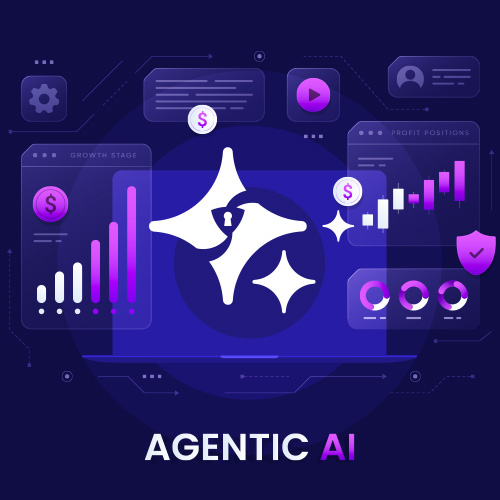The Role and Impact of Agentic AI in Revolutionizing Banking and Finance
Discover how Agentic AI transforms banking and finance by automating workflows, enhancing decision-making, and driving efficiency.
The Agentic Workspace Company

How Agentic AI is Transforming Banking with Automation, Efficiency, and Intelligence
In the previous blog we discussed about the key applications that can benefit from AI integration as well as identified use cases for AI integration.
In this blog we will be discussing the role of Agentic AI in revolutionizing banking and finance.
Agentic AI is the natural and impactful evolution from Predictive AI to Generative AI to now Agentic AI.
Predictive AI as the name implies predicts a future event and also atomate some of the workflows, Generative AI can synthesize and compress voluminous data into meaningful summaries and recommendations, whereas Agentic AI orchestrates end-to-end autonomous tasks by orchestrating multiple workflows without human intervention.
Agentic AI is poised to be the real TCO and ROI driver for Agentic AI transformation for banks and financial institutions.
How & What - Agentic AI to Banking & Finance3
Let’s see how Banks & Financial Institutions can prepare and switch over to Agentic AI and taste its benefits.
To prepare for the implementation of Agentic AI in banking or financial institution, consider the following would help,
-
Understand Agentic AI: Gain a thorough understanding of what Agentic AI is and how it differs from traditional AI. Educate workforce about the capabilities, benefits, and potential challenges of Agentic AI.
-
Need & Value: Determine the specific areas where Agentic AI can add value, such as fraud detection, customer service, or risk management. Assess existing infrastructure and identify the gaps that need to be addressed before implementing Agentic AI. Use SWOT like tools to determine the real time challenges.
-
Ensure access to high-quality: Diverse data that Agentic AI can use to learn and make decisions. Cleaning the existing unwanted data to ensure accuracy and reliability along with the robust data privacy measures to protect customer information.
-
Right Tools and Platforms: Select AI platforms and tools that are compatible with the organization's needs and infrastructure and need to ensure that the chosen tools can be seamlessly integrated with the existing systems.
-
Develop AI Models: Work with AI experts to develop custom Agentic AI models tailored to the specific use cases and rigorously test and validate AI models to ensure they perform accurately and reliably.
-
Implement and Monitor: Start with pilot programs to test Agentic AI in a controlled environment before full-scale implementation. Continuously monitor the performance of the AI models and adjust as needed.
-
Training Workforce: Provide training to employees make them understand and work effectively with Agentic AI. Prepare the workforce for the changes that Agentic AI will bring and address any concerns or resistance.
-
Ethical AI Practices: Implement measures to detect and mitigate biases in the AI models. Ensure transparency in how AI decisions are made and communicate this to customers and stakeholders.
-
Regulatory Compliance: Keep up to date with regulatory requirements related to AI and ensure practices comply with relevant laws. Maintain thorough documentation of AI development and implementation processes.
Organization can effectively prepare for the integration of Agentic AI and leverage its potential to drive growth and innovation in the banking and finance sector by applying the above parameters.
In the final and third part of this blog series we shall discuss the benefits of Agentic AI in Banking and Finance as well as Five Transformational Agentic AI use cases in banking and financial services industry.
References:
- 3. Gartner. (Market reports regarding AI use cases). (For benefits and use cases).



